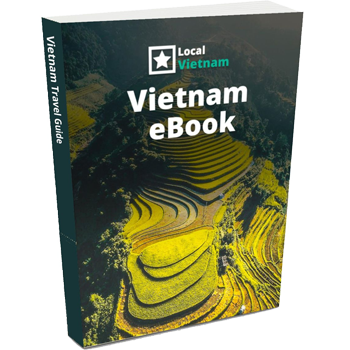What is Tam Giang Lagoon?
Tam Giang Lagoon is a vast, shallow body of water located just 12 to 15 kilometers outside Hue, stretching all the way across Thua Thien Hue Province. It’s part of a much larger system that includes Cau Hai Lagoon, with a total length of nearly 70 kilometers running parallel to the coast. The lagoon is fed by rivers like the famous Perfume River, and its waters eventually flow into the sea through several inlets.

Rather than being one single lagoon, Tam Giang is made up of a network of connected waterways, wetlands, and smaller lagoons. You’ll find different access points across the region, including well-known spots like Chuon Lagoon, Thuan An, and Quang Loi Village. These areas offer a mix of peaceful views, traditional fishing villages, and some of the best opportunities to explore the natural beauty and daily life along the central coast.
Surrounded by rice fields, low-lying fishing communities, and quiet countryside roads, Tam Giang Lagoon feels far removed from the tourist crowds. Its size and scenery make it one of the most unique landscapes in Vietnam—and one of the most underrated.
Local life around the lagoon
Life around Tam Giang Lagoon moves at a different pace. Here, generations of families have made their living from the water—casting nets by hand, steering small wooden boats, and tending fish and shrimp farms in quiet, open stretches of the lagoon. It’s a place where you can still see Vietnam’s traditional fishing culture in action, largely untouched by tourism.
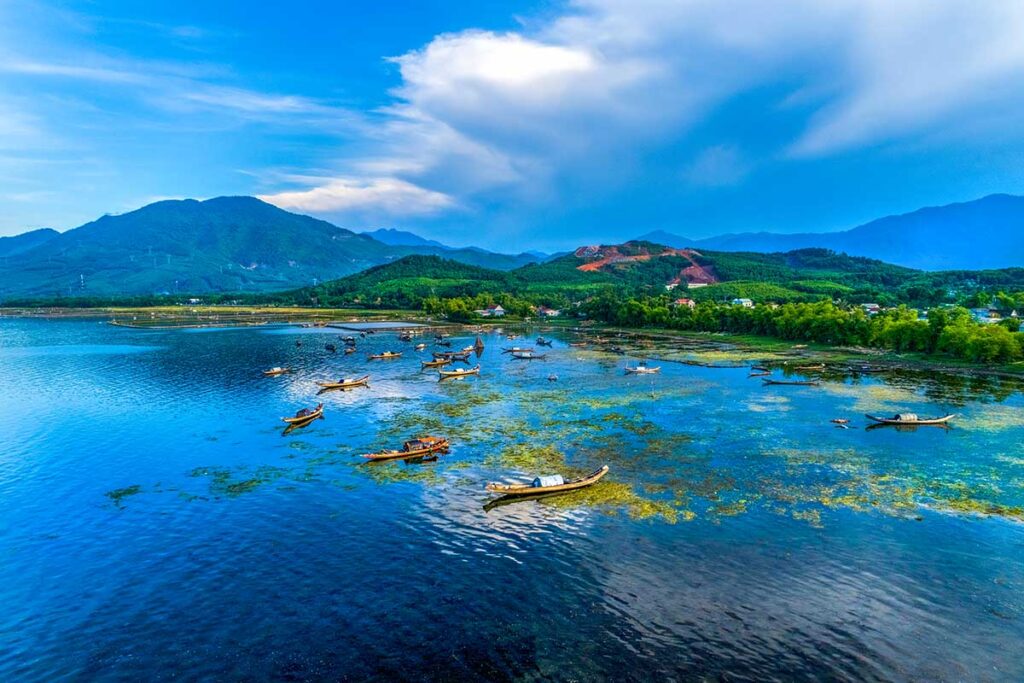
Locals fish for mullet, goby, tilapia, and seasonal varieties of shrimp and crab. Aquaculture is now a big part of life too, with fish cages and shrimp ponds dotting the shallow waters. In some areas, you’ll also see nets suspended on bamboo poles, gently swaying in the wind—used for catching tiny fish and aquatic plants.
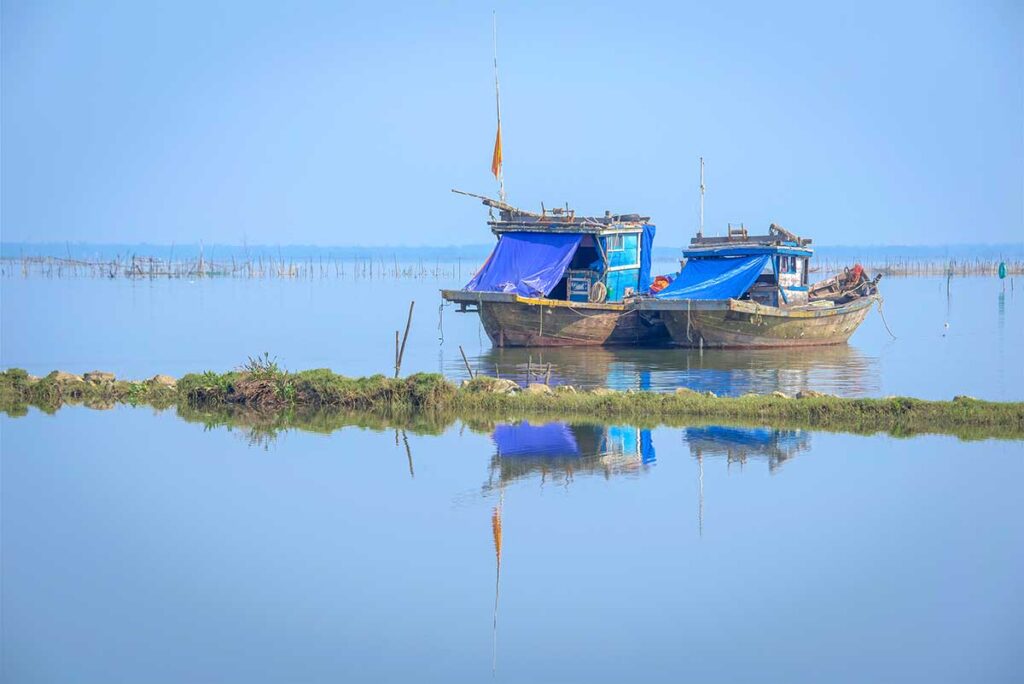
Some families still live directly on the water, in tiny boats that double as floating homes. These boat-dwelling communities have existed for generations. After major storms, the government offered land to help families settle, but not everyone could afford to build a house. Many sold the land and stayed on their boats, choosing the life they knew best—simple, tough, but deeply tied to the lagoon.
It’s not a place of tourist shows or staged experiences. Instead, visiting Tam Giang offers a glimpse into a way of life that’s slowly disappearing in other parts of Vietnam—humble, resilient, and shaped by water.
Things to do at Tam Giang Lagoon
Tam Giang Lagoon isn’t filled with big attractions or organized tours, but that’s exactly its charm. It’s a place for quiet exploration, slow travel, and meaningful encounters. Here are some simple but memorable things you can do around the lagoon:
1. Explore a fishing village
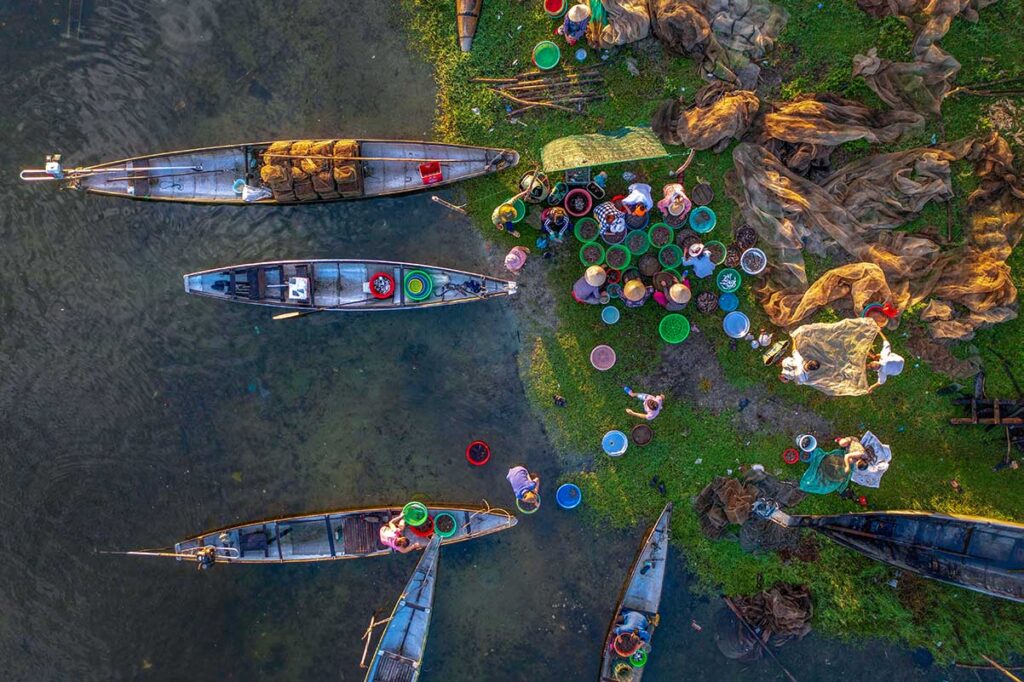
Wander through one of the small fishing villages dotted along the lagoon’s edge, like Quang Loi or the area near Chuon Lagoon. You’ll see wooden boats pulled up on shore, locals untangling fishing nets, and bamboo fish traps drying in the sun. It’s a chance to meet people, watch daily routines, and get a feel for life that revolves around the water.
2. Take a boat ride on the lagoon
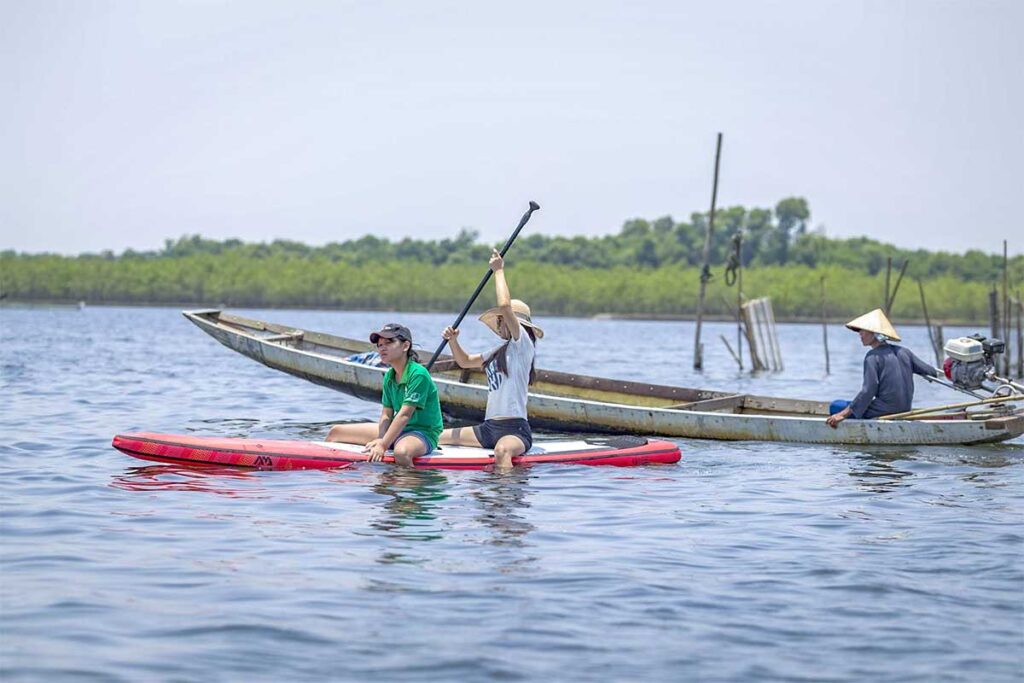
While there aren’t many official boat tours, it’s still possible to arrange a ride with a local fisherman—especially in the early morning or just before sunset. The boats are small and simple, but the experience is authentic. Gliding across the flat water, you’ll see the wide-open scenery, reflections, and maybe even someone casting a net just like their ancestors did.
3. Visit a floating seafood restaurant

Around the lagoon, especially near more built-up areas like Thuan An, you’ll find a few floating seafood restaurants that serve fish and shrimp straight from the water. Some are reached by narrow walking bridges, others by boat. The food is local, fresh, and usually very affordable. It’s also a great way to enjoy the lagoon scenery while eating something unique.
4. Capture local life through photography
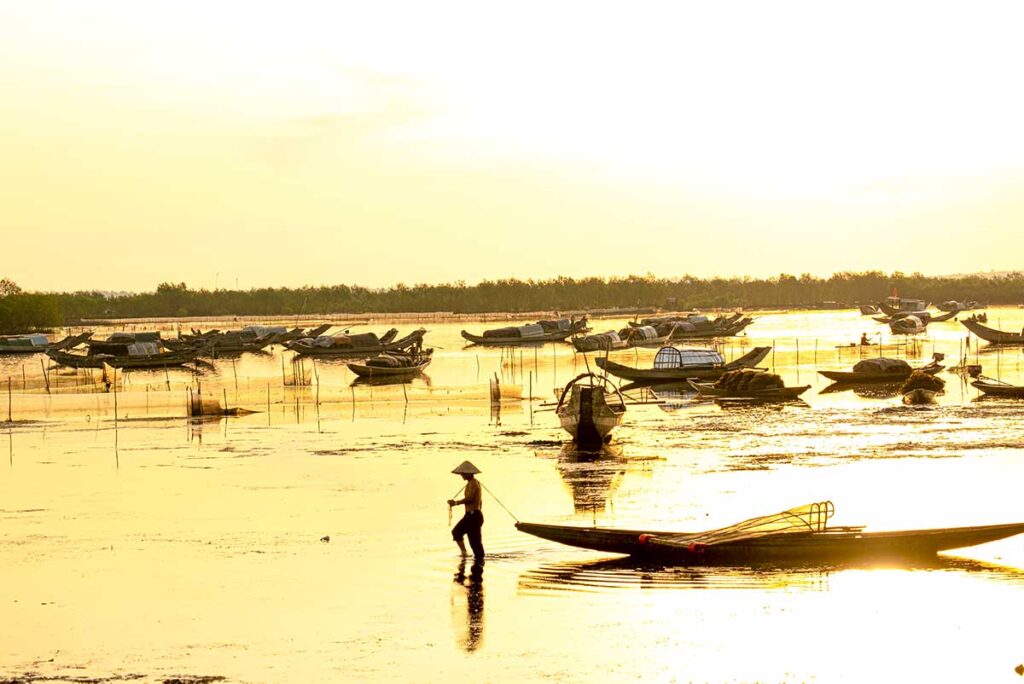
Tam Giang Lagoon is a favorite for Vietnamese photographers, and it’s easy to see why. The calm waters create beautiful reflections, especially at sunrise and sunset. Fishermen silhouetted against the sky, nets hanging on poles, and misty rice paddies in the background make for stunning shots. Even if you’re not a pro, it’s a great place to slow down and just take in the view.
How to get to Tam Giang Lagoon
By motorbike or car from Hue
Tam Giang Lagoon is about 30 minutes from Hue, depending on which part you choose to visit. There’s no single entrance, since the lagoon stretches for nearly 70 km along the coast. Popular and accessible areas include Chuon Lagoon, Thuan An, and Quang Loi Village—each offering a different perspective of local life and the peaceful water landscape.
Private tour options
The most convenient way to visit is with a private car or motorbike, which gives you the freedom to explore smaller villages and stop for photos. If you want a more in-depth experience—like a boat ride with a local fisherman or finding good spots for photography—you can book a customized private tour. These are arranged through local agencies, and while they’re not common group tours, they’re flexible and tailored to your interests.
Hoi An to Hue tours along the lagoon (most recommended)
If you’re traveling between Hoi An and Hue, many Easy Rider motorbike tours and military jeep tours take the scenic route along the lagoon. Instead of following the highway, they use the quiet countryside roads beside the water. These tours often include unplanned stops to see houseboats, fishermen, and daily life up close, making it a great way to experience the lagoon without going out of your way.
Cycling to the Lagoon
There are currently no standard cycling tours from Hue to the lagoon, but it’s a peaceful and scenic area that works well for private cycling trips. If you’re experienced and don’t mind longer distances, cycling to places like Chuon Lagoon or Quang Loi can be rewarding. Just be sure to plan your route and ask in advance if you want to include it in a private guided bike tour.
Accommodation around Tam Giang Lagoon
Tam Giang Lagoon is best known for its peaceful landscapes and fishing villages, not for tourism infrastructure. There are a few places to stay, but this is not a developed area with many hotels or guesthouses. Most travelers choose to visit for a few hours rather than overnight.
Is it worth staying overnight?
Only if you have time to spare. The lagoon is beautiful and calm, and staying here can be a refreshing break if you’re traveling slowly through Central Vietnam. However, for most travelers with limited time, it’s more practical as a short stop rather than an overnight stay. With Hue’s historical sights, the beaches of Da Nang, and Hoi An all nearby, it’s hard to fit Tam Giang Lagoon into a tight itinerary unless you’re looking specifically for quiet and isolation.
Local homestays and guesthouses
In small towns and villages around the lagoon—such as near Chuon Lagoon or Quang Loi—you’ll find a few homestays and basic hotels. These are simple, family-run places with minimal facilities. It’s a good way to experience local life, but don’t expect modern comforts or tourist services.
Vedana Lagoon Resort & Spa
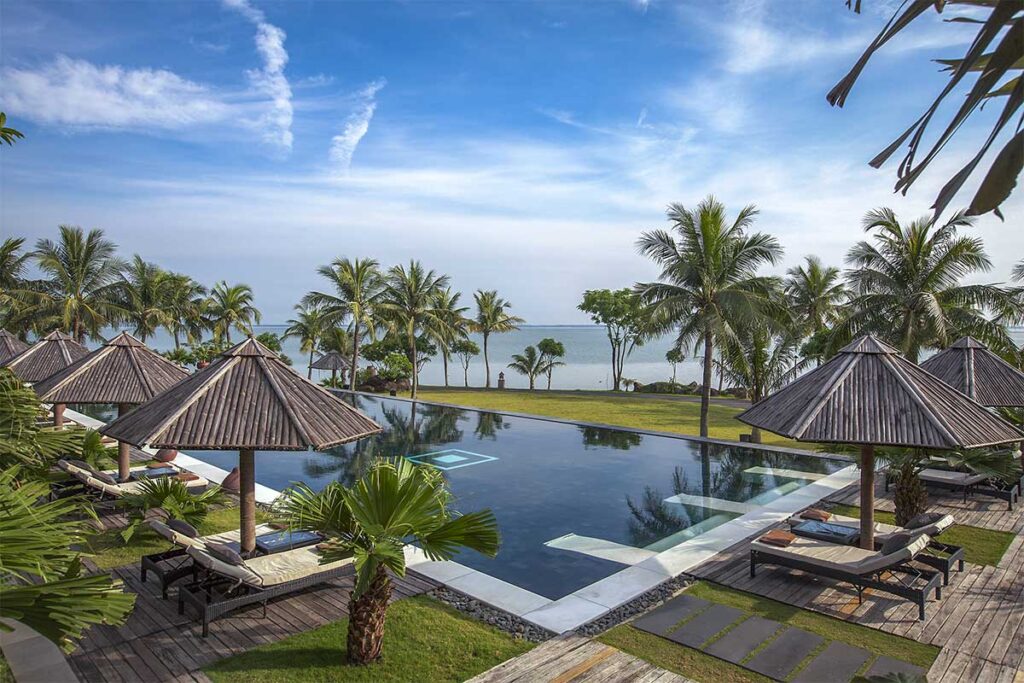
If you’re looking for something more upscale, Vedana Lagoon Resort & Spa is the standout option. This luxury resort offers overwater villas, private pools, and spa treatments. It’s quiet and beautifully located on the lagoon, making it popular with couples and honeymooners. Just keep in mind it’s quite isolated.
Travel tips
Visiting Tam Giang Lagoon is easy if you go prepared. Here are a few practical tips to help you make the most of your trip:
- Best Time to Visit: The dry season from March to August offers the best weather and clearest skies, especially for boat rides and photography. Sunrise and sunset are the most beautiful times of day.
- Avoid the Highway: If you’re heading toward Lang Co Beach, take the smaller roads that run along the lagoon instead of the main highway. It’s slower, but you’ll pass fishing villages, stilt houses, and peaceful views that you’d completely miss otherwise.
- What to Bring: Bring small cash—many places don’t accept cards, especially for boat rides or food in local eateries. Also pack a hat, sunscreen, and mosquito repellent, especially if you’re staying until sunset.
- Plan in Advance: If you want a boat ride, guide, or specific experience (like photography), try to arrange it ahead of time. Most activities around the lagoon aren’t set up for walk-in tourists.

